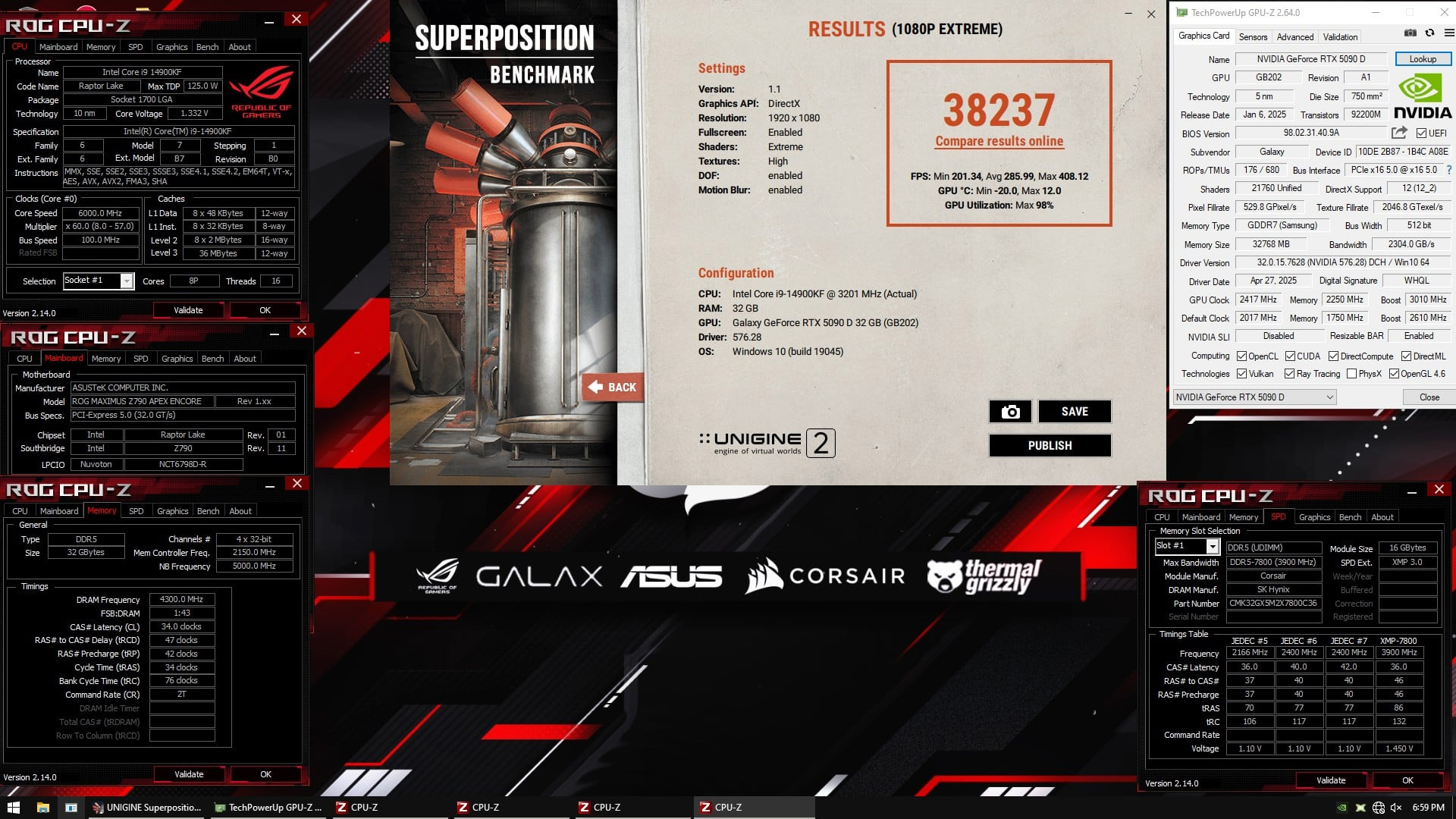What do you get when you combine one of the world’s best overclocking teams with a special BIOS from Nvidia, and a Galax Hall of Fame 5090D with dual 16-pin power connectors? New world records in a number ofbenchmarks, that’s what. In this case,WCCFTech reportsthat team OGS broke records in Unigine Superposition, 3DMark Port Royal, and GPUPI, not to mention pushing the GPU to the highest clocks we’ve ever seen to manage it.
The Nvidia RTX 5090D is a special, China-only model of its flagship 5090 graphics cards with reduced AI performance; But its gaming performance remains intact, and indeed, special editions do exist and have been distributed to some of the world’s top overclockers to see what they can do.

Team OGS pushed the Galax RTX 5090D GPU HOF edition to the extremes by utilizing both of its dual 12V-2x6 connectors for up to 1,200W of power delivery. To make sure the BIOS didn’t hard lock them to lower power limits, too, they leveraged a unique Extreme OC BIOS from Nvidia that technically allows for up to 2,000W to be applied to the GPU and is only available for some of the world’s top overclocking teams and individuals.
The combination of more than double the standard 5090D’s power and some liquid nitrogen cooling allowed Team OGS to push this special card to the absolute limits. They got the core clock up to 3,650 MHz when breaking the GPUPI benchmark with atime of 39 seconds; That’s over 1,200 MHz higher than the stock boost clock.

With a core clock of 3,570 MHz and 2,250 MHz on the memory, the team managed to break the 3DMark Port Royal score benchmark, achieving47,469 points. At 3,540 MHz on the core, they also managed to break the Unigine Superposition 1080p Xtreme benchmark record, with38,237 points.
Also impressive in this overclock session was the capability of the GDDR7 memory. At 2,250 MHz, that’s a near 500 MHz increase and represents a huge overclock. That increase in bandwidth will undoubtedly have contributed to these impressive scores, and shows there’s lots of potential headroom for this first iteration of the next-generation memory chips to grow into as it matures.

This also raises questions about the overclocking potential ofNvidia’s RTX Pro 6000professional graphics card. It features more CUDA cores than the RTX 5090 and 5090D and has proven more capable in the past.It would need more power from somewhere, though, as this record-breaking session was only possible because of the double power connectors on the HOF edition of this GPU.
Get Tom’s Hardware’s best news and in-depth reviews, straight to your inbox.
What won’t be able to manage this is the upcoming5090D V2, which lacks the memory bandwidth of the standard edition.
FollowTom’s Hardware on Google Newsto get our up-to-date news, analysis, and reviews in your feeds. Make sure to click the Follow button.
Jon Martindale is a contributing writer for Tom’s Hardware. For the past 20 years, he’s been writing about PC components, emerging technologies, and the latest software advances. His deep and broad journalistic experience gives him unique insights into the most exciting technology trends of today and tomorrow.